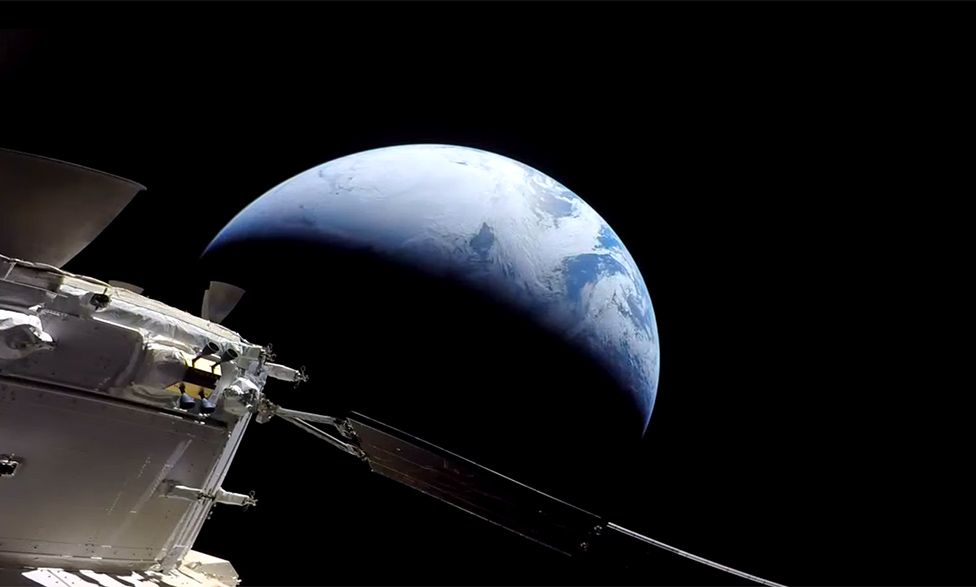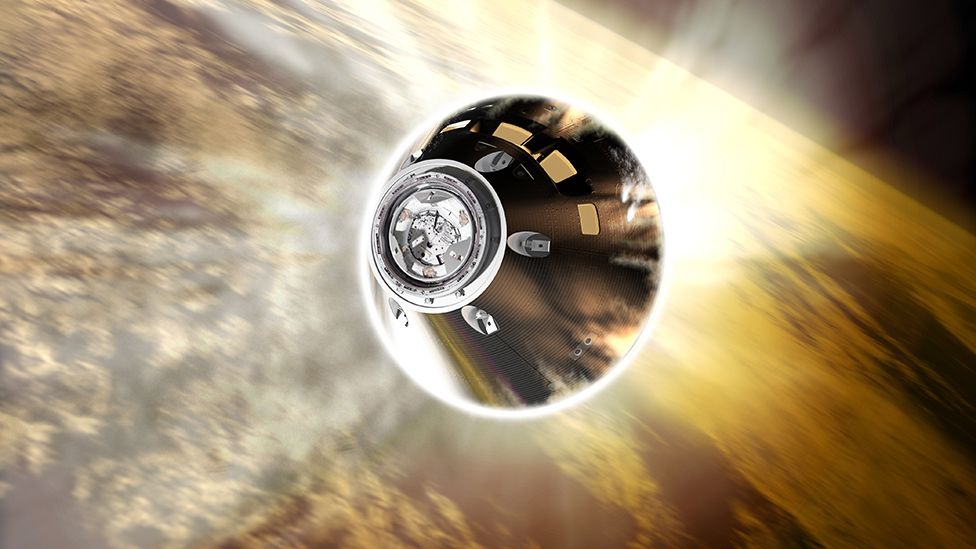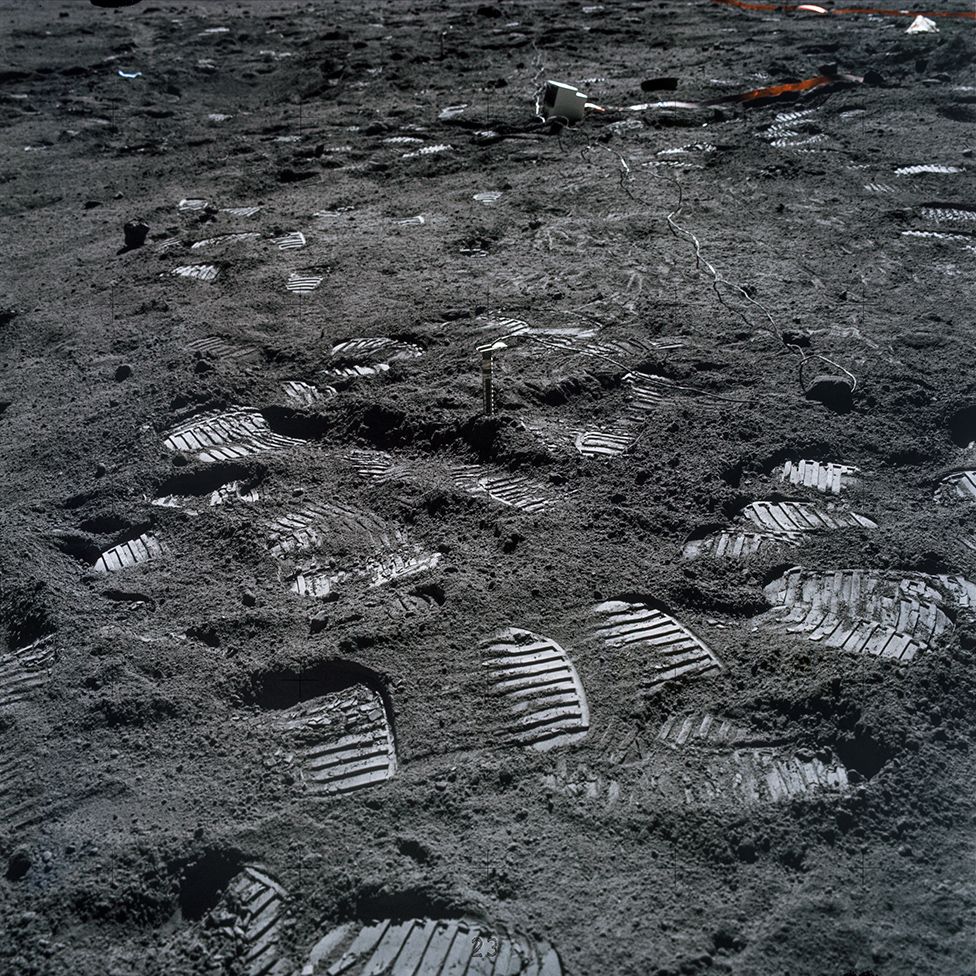After a 26-day flight around the Moon, Nasa’s future astronaut ship parachutes into the Pacific.

The American space agency Nasa has brought home its next-generation astronaut ship after a near-26-day mission to orbit the Moon.
The Orion capsule splashed down in the Pacific Ocean after a fiery re-entry into Earth’s atmosphere and a descent that was further slowed by parachutes.
Because this was a test, there were no people aboard this time, but that will change for the next flight.
Nasa is planning ever more complex missions with Orion.
These will likely start in late 2024 and include, in 2025 or 2026, an attempt to put humans back on the lunar surface.
This was last achieved exactly 50 years ago to the day by the crew of Apollo 17. The agency’s new project is called Artemis, who in Greek mythology was the sister of Apollo.

Image source, NASA
Nasa had described the Sunday return of Orion to Earth as its “priority one” objective.
Vehicles coming back from lunar distances do so at very high speed – some 40,000km/h (25,000mph) at initial contact with the atmosphere.
A robust heatshield is required to prevent the ship from tearing itself apart as it pushes up against the air and temperatures reach close to 3,000C.

Image source, NASA
The protective layer on the underside of Orion is a new design from previous craft, and Nasa had to be sure it was effective before risking the lives of astronauts on future missions.
The spectacular sight of the capsule’s 11 parachutes deploying and inflating in sequence was clear indication that the heatshield had done its job.
But engineers won’t pass judgement until they’ve inspected it.
After the capsule’s drop into the ocean, not far from Mexico’s Guadalupe Island, recovery teams moved in to gather imagery that can be fed into the post-flight analysis.

Apollo 17 – The last time

Image source, NASA/JSC/ASU/@AndySaunders_1
Humans last landed on the Moon on 11 December, 1972, at 19:54 GMT. The Apollo 17 crew of Gene Cernan and Harrison Schmitt spent just over three days on the surface before coming home. This image, remastered by image processor Andy Saunders, shows the boot prints they left behind. In the absence of the erosion that occurs on Earth, these markings would look exactly the same today, half a century on.

Watching the re-entry was Nasa’s partner on the mission – the European Space Agency.
Esa provided the service and propulsion module that had expertly pushed Orion towards, around, and back from the Moon.
It didn’t splash down with the capsule. It was detached about 20 minutes prior to re-entry and was destroyed as it fell towards Earth over the South Pacific.
Europe will continue to supply further service modules for future Orion missions as a means of securing seats for its own astronauts alongside their American colleagues.
The propulsion model for the next Artemis mission – the first to carry a crew – has already been delivered to Nasa. A third vehicle – the one that will be used on Artemis III, the lunar landing mission, is in an advanced stage of assembly in Germany.
This video can not be played
To play this video you need to enable JavaScript in your browser.
Much still has to go right if the timelines are to be maintained for a human return to the Moon. Nasa doesn’t yet have a landing system. This is being developed by the US entrepreneur Elon Musk.
He is building a mammoth rocket and crew vehicle he calls Starship. This is due to have its maiden flight above the Earth in the coming months.
The idea for Artemis III is that Orion would meet up with Starship at the Moon, with Mr Musk’s vehicle taking the astronauts down to the surface.
As Orion returned to Earth from the Moon on Sunday, two spacecraft were headed in the opposite direction.
Japanese company iSpace despatched its Hakuto-R robotic lander. This is taking a slow route to the Moon lasting several months. If it can put down safely, it will deploy a small rover from the United Arab Emirates, called Rashid, and a similarly small deformable robot from the Japanese space agency to investigate the properties of lunar soil.
Nasa also had a payload on the same launch rocket. Called Lunar Flashlight, this briefcase-size spacecraft will circle the Moon, using infrared lasers to search for deposits of water-ice.